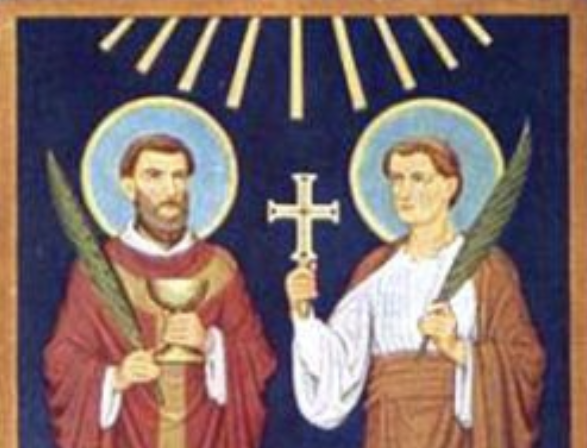Sts. Marcellinus and Peter were two fourth-century martyrs who were highly venerated after the discovery of their tomb and the conversion of their executioner.
Although not much is known about the two men, they lived and died during the reign of the Roman Emperor Diocletian. In 302, Diocletian changed his tolerant stance towards Christianity and began a campaign to eliminate the Church from his empire.
Diocletian ordered the burning of several Catholic churches and their sacred texts, and had many clergy and laypeople imprisoned and tortured. His goal was to force Christians to submit to the Roman pagan religion, and worship him, as emperor, as a divine being.
In the middle of this persecution, around 303, a Roman exorcist by the name of Peter was imprisoned for his faith. While he was in prison, tradition holds that Peter freed Paulina, the daughter of the prison-keeper Artemius, from demonic influence, through his prayers.
Paulina, Artemius, his wife, and his entire household were said to have converted when they saw this demonstration of Christ’s power over demons. They were all baptized by the Roman priest Marcellinus.
After this, Marcellinus and Peter were called before a judge, who was determined to enforce the emperor’s decree against Christians. Marcellinus testified courageously to his faith, and was beaten, stripped of his clothes, and deprived of food in a dark cell filled with broken glass.
Peter also refused to deny Christ and was returned to his jail cell.
Arrangements were made to execute the two men secretly, so that the faithful would not gather in prayer and veneration where they were buried. Their executioner forced them to clear a tangle of thorns and briars, which they did cheerfully, accepting their deaths with joy.
Peter and Marcellinus were beheaded in the forest and buried in the clearing they had made. Their location remained unknown for some time, until a devout woman named Lucilla received a revelation informing her where they were buried.
With the assistance of another woman, Firmina, Lucilla recovered the two saints’ bodies, and had them re-interred in the Roman Catacombs. Sts. Marcellinus and Peter are among the saints named in the Western Church’s most traditional Eucharistic prayer, the Roman Canon.
St. Pope Damasus I, who was a great devotee of the Church’s saints during his life, composed an epitaph to mark the tombs of the two martyrs. The source of his knowledge, he said, was the executioner himself, who had subsequently repented and been baptized into the Church.

